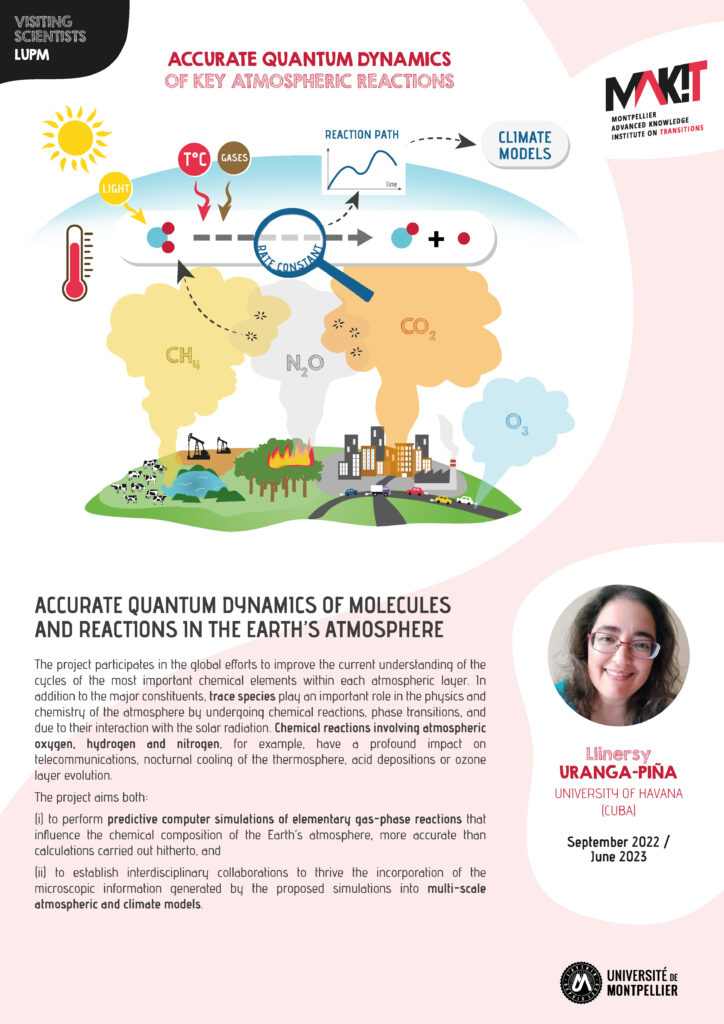Llinersy Uranga-Piña
Professor of Theoretical Physics at the University of Havana (UH), Cuba, Llinersy Uranga-Piña
obtained her doctorate in physics, in molecular science, both at the University of Toulouse III and at her home institution. Her academic work comprises intense lecturing and supervision at undergraduate and postgraduate levels, and leading a research group on computational and chemical physics which pioneered these investigations in the Faculty of Physics of the University of Havana.
Dr Uranga-Piña held several academic responsibilities (e.g. Deputy Dean of the Faculty of Physics), and received diverse distinctions (e.g. CAS-TWAS Young Scientist Award of the Caribbean Academy of Sciences). Her research work has been recognized in four occasions with the Annual Prize of the Cuban Academy of Sciences, the most prestigious scientific distinction awarded in the country. She is alumna of several scientific organizations (e.g. Lindau Nobel Laureate Meetings, Max Planck Alumni Association), and has undertaken research in internationally-renowned universities and research institutions accross Europe and Latin-America. At present, Dr Uranga-Piña focuses on the development of novel theoretical and computational models that enable the investigation of challenging molecular systems and phenomena with various potential applications in environmental science and industry, among others.
The project participates in the global efforts to improve the current understanding of the cycles of the most important chemical elements within each atmospheric layer. In addition to the major constituents, trace species play an important role in the physics and chemistry of the atmosphere by undergoing chemical reactions, phase transitions, and due to their interaction with the solar radiation. Chemical reactions involving atmospheric oxygen, hydrogen and nitrogen, for example, have a profound impact on telecommunications, nocturnal cooling of the thermosphere or acid depositions or ozone layer
evolution.
The project aims both: (i) to perform predictive computer simulations of elementary gas-phase reactions that influence the chemical composition of the Earth’s atmosphere, more accurate than calculations carried out hitherto, and (ii) to establish interdisciplinary collaborations to thrive the incorporation of the microscopic information generated by the proposed simulations into multi-scale atmospheric and climate models.
